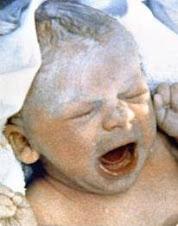London, October 22 (ANI): US scientists have developed an IVF
process that could give a woman in her early forties the same chance of
becoming pregnant as a 32-year-old.
They claimed that the screening treatment could improve a
42-year-old’s odds of having a baby from 13 per cent to 60 per cent, the Daily
Mail reported.
It works by picking only the embryos most likely to create a
healthy foetus, slashing the odds of miscarriage.
Crucially, it also involves the embryos being frozen for at
least a month after IVF to allow the woman’s reproductive organs to return to
normal.
Scientists believe that the powerful fertility-boosting drugs
given during IVF can harm the embryo if it is put into the womb too soon.
A woman aged 40 to 42 typically has a low chance of becoming pregnant with IVF
and is unlikely to conceive naturally. But the researchers from Colorado said
that their procedure could boost success rates to 60 per cent.
Patients will pay 2,000 pounds for the test, on top of a cycle
of IVF costing 3,000 pounds to 4,000 pounds a course. The process has already
been used on 1,200 women in the US.
Called comprehensive chromosome screening with vitrification, it
involves taking a few cells from a blastocyst – an embryo just five or six days
old.
An ideal blastocyst has 46 chromosomes – 23 each from the sperm
and the egg. The wrong chromosome count reduces the odds of pregnancy – or
‘implantation’ – and raises the risk of miscarriage. Only if the cells have 46
chromosomes is the embryo frozen.
Some women will not have good enough embryos and will never
become pregnant no matter how many times they have IVF. So, the scientists said
the screening could spare them the heartache of further costly treatments.
” What we’ve been able to show is that a woman aged 38 to 42, if
she has a blastocyst with a normal number of chromosomes, her chances of
implantation are independent of her age. So she has the same chances of
implantation – at 60 per cent – as a woman who is 32,” the paper quoted Dr
Mandy Katz-Jaffe, from the Colorado Center for Reproductive Medicine, as
saying.
Oxford academic Dr Dagan Wells, who helped develop the process,
said freezing the embryo, known as cryopreservation, not only boosted the
chances of pregnancy but also produced healthier babies.
He added: “The birth weight of the babies is essentially the
same as babies conceived naturally, whereas embryos produced by IVF and
transferred immediately, without cryopreservation, have a tendency to be of
lower weight.”
The scientists will explain their new IVF treatment at the
American Society for Reproductive Medicine conference in San Diego, California.
(ANI)







